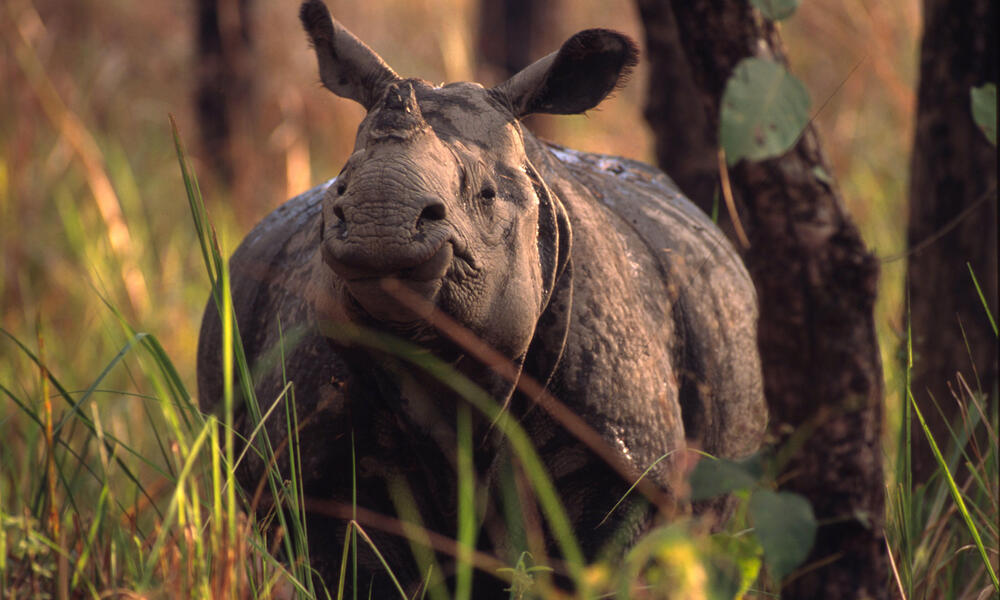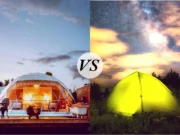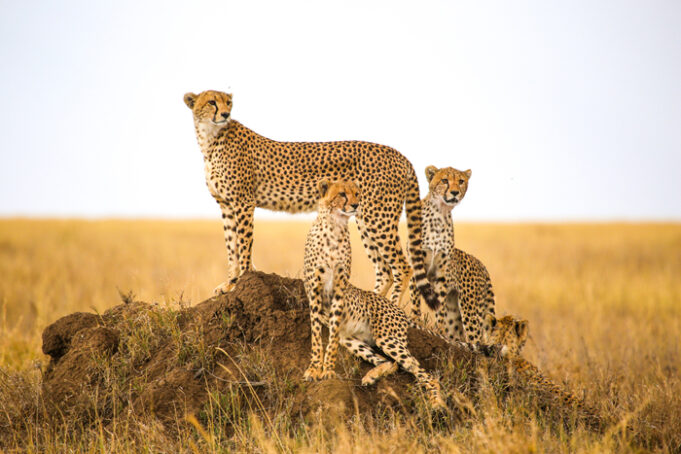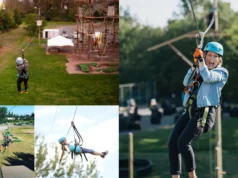8 Amazing Walking Safaris Around the World for Adventure Lovers
If you are a big fan of traveling, then you should go on a safari.
For most travelers, a safari is a once-in-a-lifetime journey, punctuated by ultra-luxurious accommodations, great food, sunsets, and guided wildlife viewing from the comfort of a large SUV.
But this classic narrative is changing in some ways as safaris compete with a growing number of walking safaris, inviting travelers to become one with the animal world.
Relying on highly trained naturalists, adventurers can now participate in mindful encounters with some of the world’s most incredible animals outside of a Land Rover.
From tracking gorillas in Rwanda to tracking polar bears in Canada, here are eight amazing walking safaris around the world.
1. Mountain Gorillas in Volcanoes National Park, Rwanda
Encountering the Mountain Gorillas
In the northernmost reaches of Rwanda, 10 native gorilla groups live in the mystical, mist-shrouded mountains of Volcanoes National Park.
With special permits, visitors can go on guided treks in search of the largest living primates on Earth, eventually leading to hours of interaction with these endangered animals.

Trekking Through the Forest
With newborns in some troops and a few silverbacks in others, each family is unique in size and vibrancy.
Given the constant movement of gorillas through this land of plenty, treks range from an easy two-hour trek along the foothills to a near-vertical half-day climb through dense forest covered in stinging nettles—no two are the same.
2. African Icons in South Luangwa National Park, Zambia
The Birthplace of Walking Safaris
Zambia’s South Luangwa National Park is considered the birthplace of the African walking safari, first introduced around the early 1960s.
It remains arguably the best place to spend adrenaline-fueled days interacting with elephants, spotting lions, wandering among giraffes, and dining with zebras.

Exploring the Camps and Terrain
Bushcamp operates six comfortable tented camps in the national park – Bilimungwe, Chamilandu, Zungulila, Kapamba, Kuyenda, and Chindeni – where walking safaris are a central part of daily life.
Furthermore, guests can travel between the five camps on extended walking safaris, covering as much of the varied terrain of South Luangwa as possible, maximizing their wildlife viewing.
3. Polar Bears in Hudson Bay, Canada
Tracking the Arctic’s Most Famous Residents
While climate change has taken its toll on polar bears around the world, there’s one region where the Arctic’s most famous residents still thrive: western Hudson Bay, north of Churchill, Canada.
Here, a healthy population of about 1,000 polar bears rules the tidal flats and prairies.

Exclusive Walking Safaris
One outfitter, Churchill Wild, has exclusive permits to track these predators on foot (as opposed to in a tundra buggy).
Churchill Wild offers twice-daily walking safaris from three lodges, where you can fly in to see the furry white giants.
4. Meerkats in the Kalahari Desert, South Africa
Observing the Charismatic Meerkats
Full of personality and charm, meerkats are as much superstars in real life as they are on TV.
Among numerous colonies scattered across the Kalahari Desert, a handful have become accustomed to human presence over the decades.

Unique Guided Walks
In Tswalu, South Africa, discover one of three habituated colonies on a guided walk and expect to be completely immersed in meerkat mayhem.
Early in the morning at Jack’s Camp in Botswana, resident “meerkat whisperer” Blake leads interactive mornings with his four-legged companions.
Read more: Explore Nature’s Towering Giants
5. The Big Five at andBeyond Phinda Private Game Reserve, South Africa
A Conservation Success Story
Founded in 1991, conservation company andBeyond began as an ambitious project to restore 32,311 acres of rangeland in KwaZulu-Natal.
This effort helped restore the region’s native biodiversity and develop a new ecotourism archetype.

Immersive Walking Safaris
Fast forward to today, and Beyond Phinda Private Game Reserve has evolved into a veritable African Garden of Eden.
Embark on an immersive walking safari from any of Phinda’s six designer game lodges, tailored to your personal goals and fitness level.
6. Primates in Nyungwe Forest National Park, Rwanda
Exploring Rwanda’s Forested Highlands
The forested highlands of western Rwanda are stunning when the mists roll in at dawn, and the sounds and sights of nature captivate the senses.
Here, Nyungwe Forest National Park is home to 13 species of primates, including the elusive chimpanzee and the gregarious Angolan colobus monkey.

Challenging Yet Rewarding Treks
The chances of seeing chimpanzees are high, as they forage in the trees in the early morning hours.
To reach their home deep in the forest, visitors must wake up at 3:45 am and prepare for a very challenging but highly rewarding trek.
7. Greater One-Horned Rhinoceros in Chitwan National Park, Nepal
Conservation Efforts in Nepal
In the early 1970s, Nepal created its first national park, Chitwan National Park, to prevent the country’s dwindling one-horned rhino population from going extinct.
Since then, persistent conservation efforts have helped the park’s population grow from fewer than 200 to more than 600.

Unique Safari Experiences
Praised by the conservation community, the pioneering park caught the attention of Taj Safaris, which has successfully launched rhino-spotting safaris in neighboring India.
Visitors can set out on daily adventures in search of these leviathans by jeep, canoe, boat, or foot.
Read more: Top 12 Easy & Safe Countries to Explore
8. Witnessing the Great Migration in the Northern Serengeti, Tanzania.
Witnessing the Annual Drama
Many wildlife enthusiasts time their East African safari to witness the drama of the annual Great Migration.
Millions of wildebeest, zebra, and gazelle cross the Mara River for fresh grass and water.
![]()
A Rare Walking Safari Experience
While vehicle overcrowding remains a problem in much of Kenya’s Masai Mara, the Tanzanian side of the Mara River offers a more intimate migration experience.
Asilia Africa’s Sayari Camp allows guests to experience the Great Migration from a completely different perspective on foot.





















